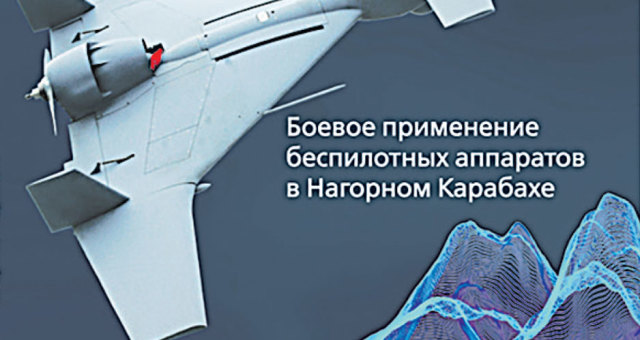At the end of September 2020, the long – standing frozen conflict in Transcaucasia over the status of Nagorno-Karabakh, the internationally recognized territory of Azerbaijan, whose majority population is Armenians, sharply escalated. One of the main features of the Karabakh war in 2020 was the massive use by the Azerbaijani side of unmanned aerial vehicles (UAVs) of various types of Israeli and Turkish development.
It is drones that have become the main threat to the army of the unrecognized Nagorno-Karabakh Republic. Azerbaijani unmanned vehicles, in the absence of modern air defense (air defense) and electronic warfare (EW) equipment, as well as appropriate training of personnel, provided direct air support for the military operation with high efficiency, replacing combat and reconnaissance aircraft.
Despite the extreme relevance of the experience of using various types of UAVs in Nagorno-Karabakh, no attempts were made to generalize it until recently. The first analytical work in which this experience was studied and analyzed was the book "Combat use of unmanned aerial vehicles in Nagorno-Karabakh", published by Status in December 2020. The 124-page book is published in 165x235 mm format and is well illustrated (more than a hundred photos, diagrams and diagrams).
The book consists of an introduction, five chapters and a conclusion. The first chapter analyzes the import of weapons by Armenia and Azerbaijan in 2011-2019. The second chapter examines the unmanned technologies that were in service with Azerbaijan and analyzes the main reasons that contributed to their development, including the reform of the national defense industry, as well as the successful military-technical cooperation of Azerbaijan with Israel and Turkey in the field of UAVs. The third chapter is devoted to unmanned technologies that were in service with Armenia. The fourth chapter analyzes the combat use of UAVs in Nagorno-Karabakh before and after September 27, 2020, and the results of this use are described in chapter five. In conclusion, the main conclusions that could help in understanding the current state of some types of unmanned aircraft, as well as trends in its development in the near and medium term are presented.
The authors of the book tried to answer a number of questions related to the combat use of UAVs by the Azerbaijani and Armenian sides. In particular, the answer to the natural question is given: how did the Azerbaijani military, who had no experience of massive use of UAVs as part of the reconnaissance and strike circuit under various tactical scenarios, and who had not previously conducted any large-scale military exercises to practice such operations with the participation of drones, manage to ensure massive and highly effective combat use of drones of various types?
The Nagorno-Karabakh war of 2020 clearly demonstrated some modern trends in the development of barrage ammunition, reconnaissance and reconnaissance-strike UAVs, tactics of their single and group use, integration with other weapons. Knowledge of these trends is very relevant, since today's research of various concepts of combat use of a swarm of UAVs, as well as the improvement and implementation of swarm algorithms can make unmanned vehicles one of the most popular means of armed struggle in the near future.
In Nagorno-Karabakh, Turkey, which provided military assistance to Azerbaijan, clearly demonstrated to the whole world the highly effective integration of strike and reconnaissance-strike unmanned vehicles of its own and Israeli development into the concept of conducting a new generation of war. In fact, the "droning" of military operations in the regional conflict was demonstrated in the NKR. And in these actions, not expensive heavy attack UAVs were successfully used, but relatively cheap unmanned vehicles and barrage ammunition.
As it is emphasized in the book, the results of the combat use of Israeli and Turkish UAVs in Nagorno-Karabakh made these devices excellent
advertising on the global arms market. If Israel was one of the world leaders in the market of unmanned vehicles up to this point, then for manufacturers of Turkish UAVs today there are good opportunities to strengthen their positions in this market.
It is quite obvious that both Turkish and Israeli companies developing UAVs and weapons have received a large amount of data on the actual use of their unmanned vehicles and aircraft weapons in Nagorno-Karabakh. This information will make it possible to radically improve both the devices themselves and the range of aircraft weapons used, significantly increasing their competitiveness. And this, presumably, will create additional difficulties for Russian developers of unmanned vehicles in their promotion to various segments of the world arms market.
The results of the combat use of unmanned aerial vehicles in the six-week war in Nagorno-Karabakh raised many questions, including for the relevant structures of the Ministry of Defense of the Russian Federation. The answers to these questions should be formulated as soon as possible, converting the findings into the right directions for the further development of combat unmanned aerial vehicles in Russia.
The newspaper "Military-Industrial Courier", published in issue No. 50 (863) for December 29, 2020

